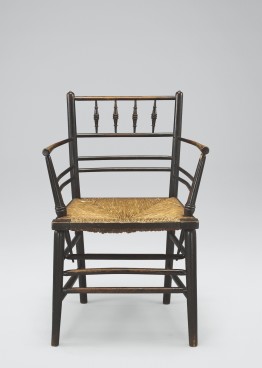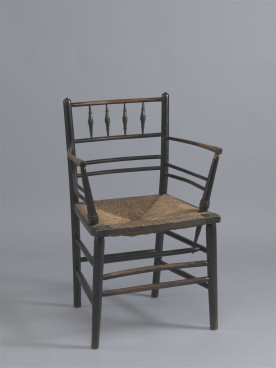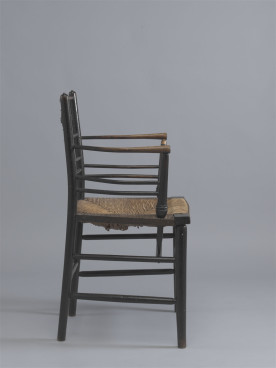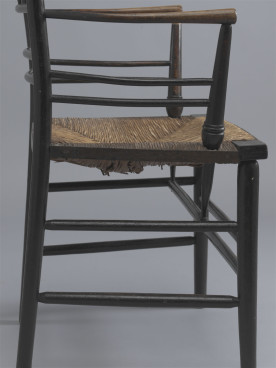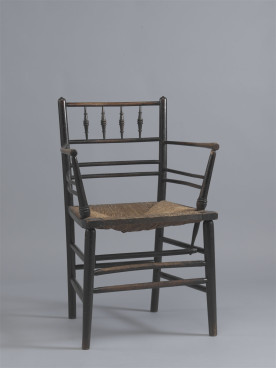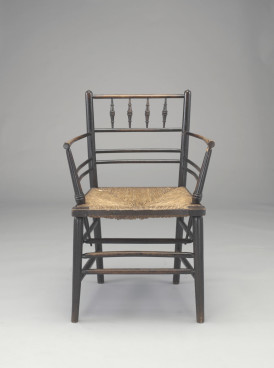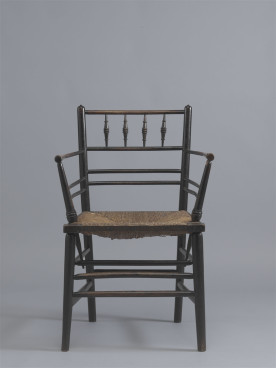Armchair, designed c.1860
Ebonised beech and rush
The design is attributed to Philip Webb. This chair was made by Morris & Co., London, and marketed as the Sussex Arm-Chair.
Adam Bowett Catalogue 19/08/2012
Description
An armchair, c.1865. The slightly splayed back posts are joined by four curved spindles, the upper pair having four vertical turned spindles between them, the lower pair more closely spaced and without vertical spindles. The outcurved arms have paired horizontal spindles under and are raised on splayed and turned underarm supports. The rush seat is raised on turned legs joined by paired turned stretchers.
Dimensions
H: 33 ½ ” (85cm) Seat height: 17 ½ ” (44cm) W: 22 ” (56cm) D: 17 ¾ “ (45cm)
Designer / Maker
The design of the ‘Sussex’ chair is traditionally attributed to Philip Webb, for Morris, Marshall, Faulkner & Co.
Materials
Ash, oak, beech and rush
Dating criteria
This model of chair was produced by Morris, Marshall, Faulkner & Co. from about 1865.
Construction
The whole chair is turned and dowelled, with the exception of the seat. It appears that the back seat rail is dowelled into the back post as are the side rails, The front has a flat beech rail terminating in squared corner blocks into which the side rails are probably tenoned. The arms are braced by means of the arm supports passing through the side rails and being dowelled in to a medial stretcher positioned between the upper side stretchers.
Marks or stamps
None
Condition
The ebonised surface appears to be substantially original, heavily worn in places, particularly on the upper back, the arms and the front stretchers. There are nailed repairs to both arms at the junction with the back post and the right arm support has a patched repair at the junction with the arm. The oak strips nailed around the edge of the seat are unlikely to be original and the rush is probably replaced.
Additional remarks
A very well-known design, usually known as the ‘Sussex’ chair and reputedly derived from vernacular examples found in that country. However, many of its most striking features, such as the arm supports passing through the seat into a rail below, are characteristic of light chairs made in many areas, and similar chairs were also found in France. The very light construction means that this cannot be perceived, as it usually is, as a ‘vernacular’ chair. Rather, it derives from 19th century ‘fancy chairs’, made in large numbers as bedroom chairs, and for balls, routs and other occasional gatherings (see Boram (2010 & 2012).
References
John Boram, ‘Makers of Dy’d, Fancy and Painted Chairs’, Regional Furniture, XXIV (2010), pp. 49-82.
John Boram ‘A Regional Perspective on the Innovative Development of Light Chairs’, Regional Furniture, XXVI, pp. 1-28.
Linda Parry (ed.), William Morris, London (1996), p. 168, fig. J11.

